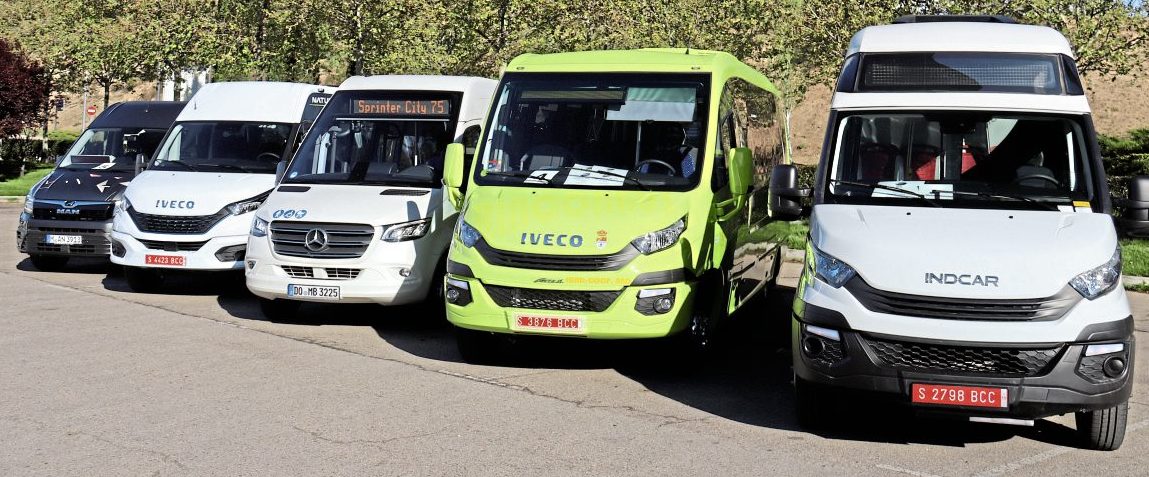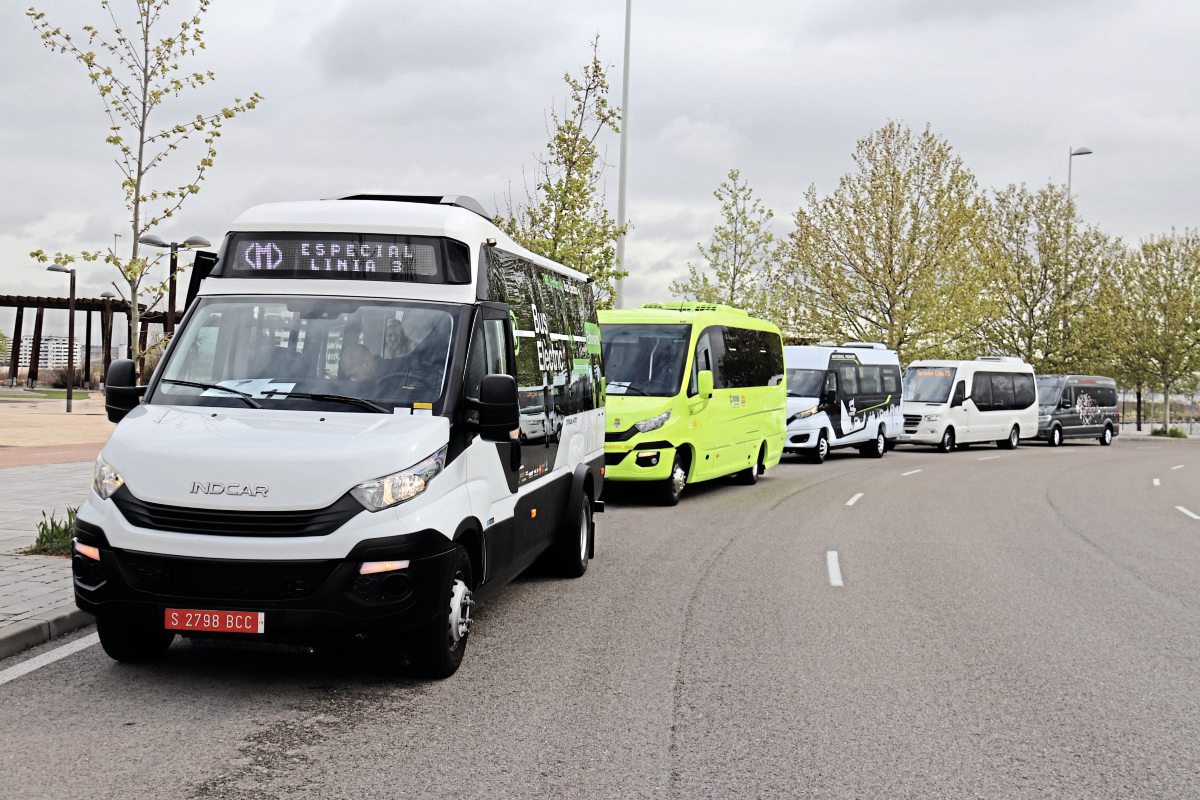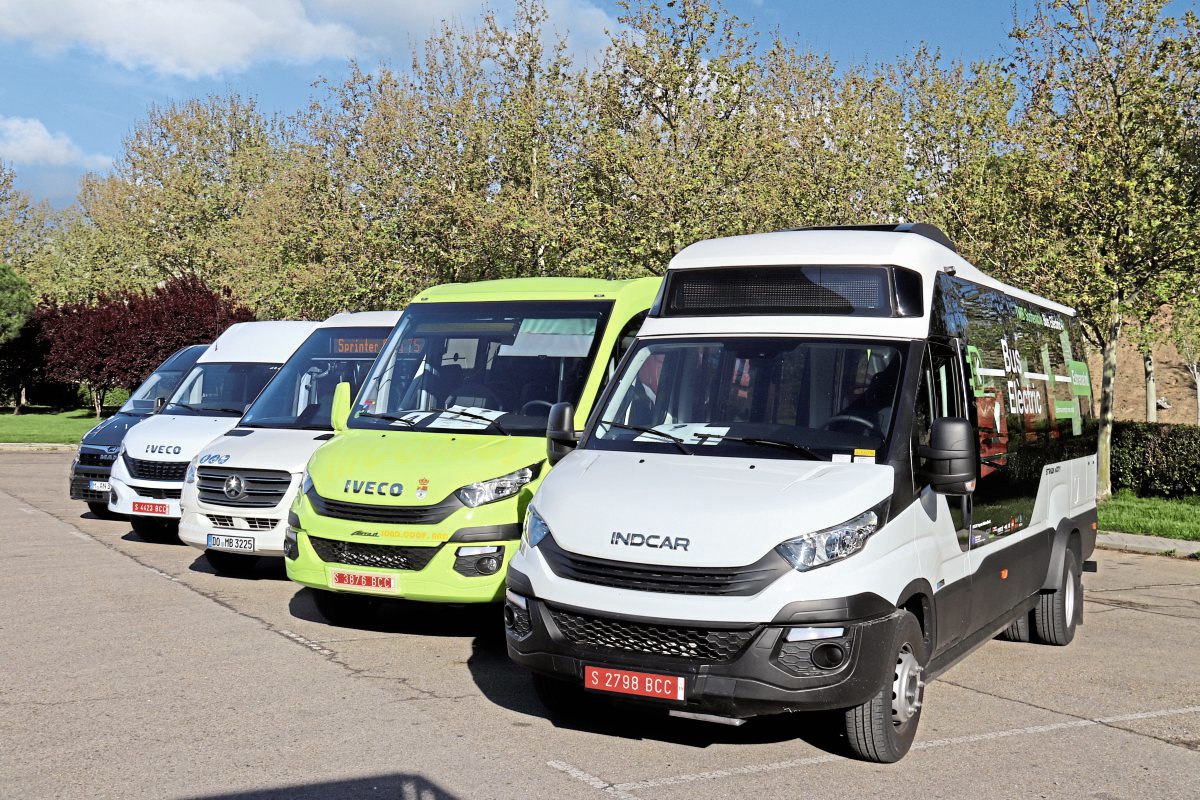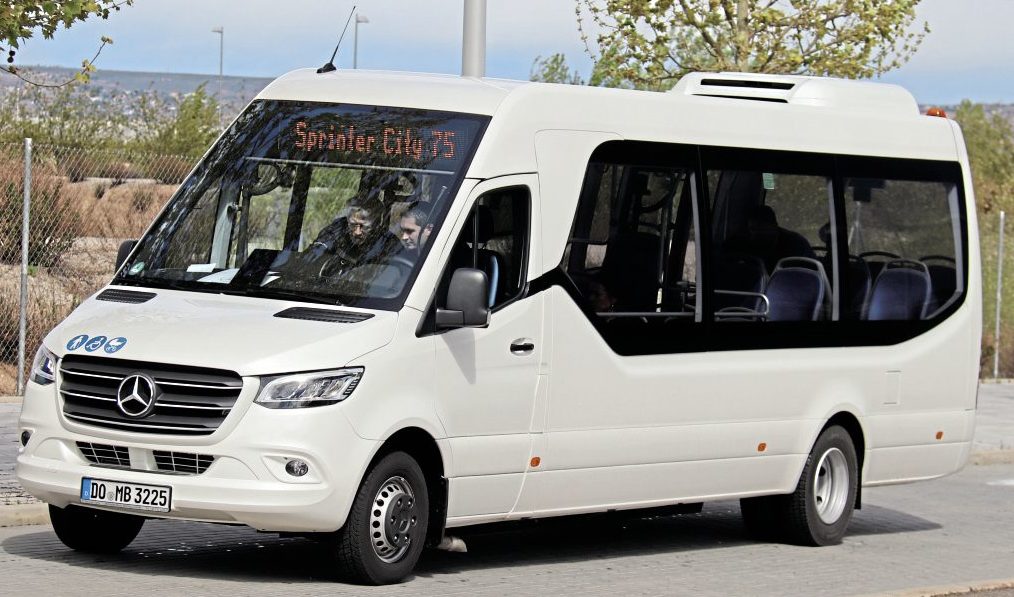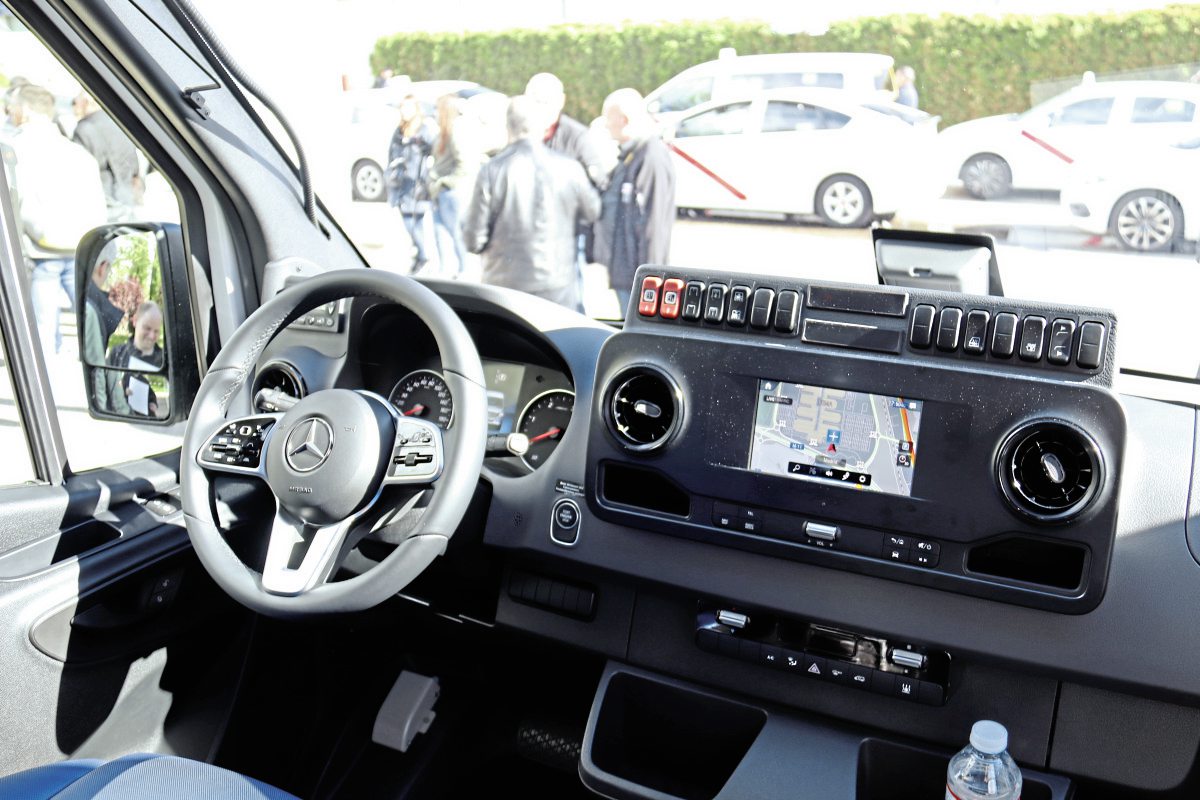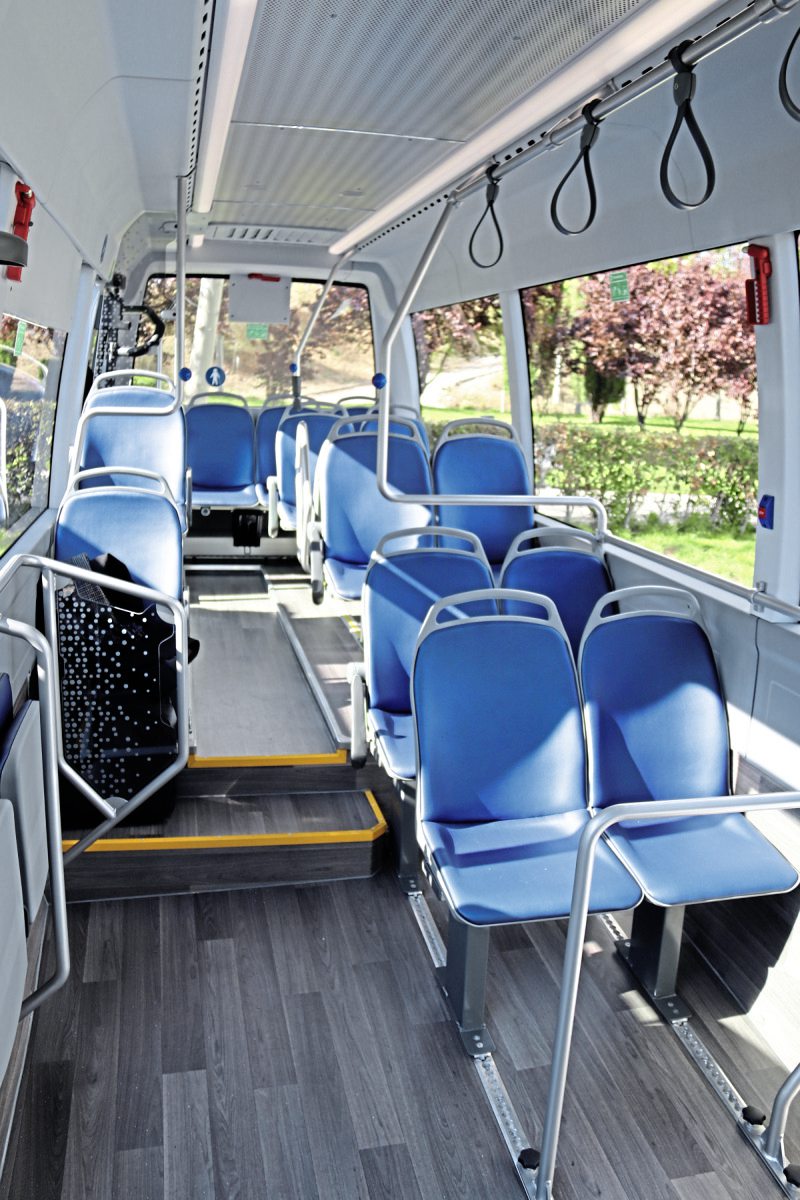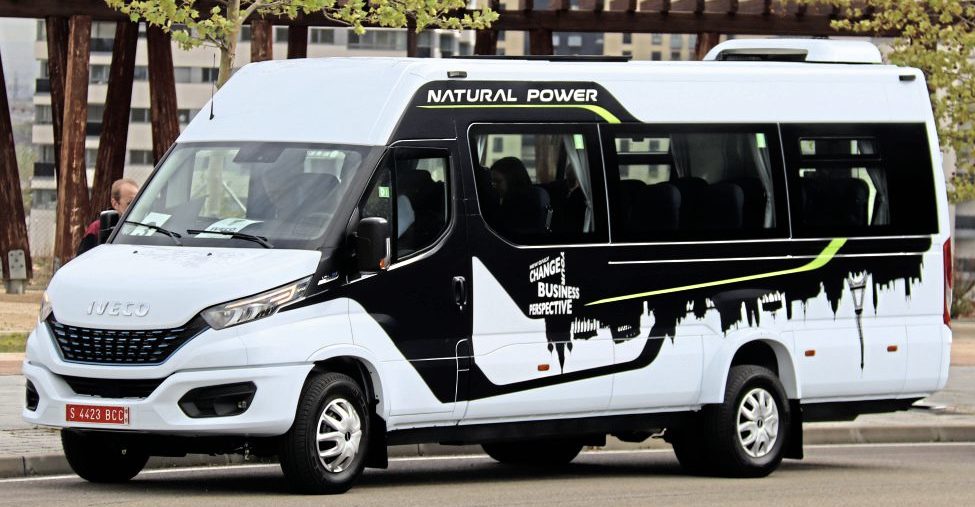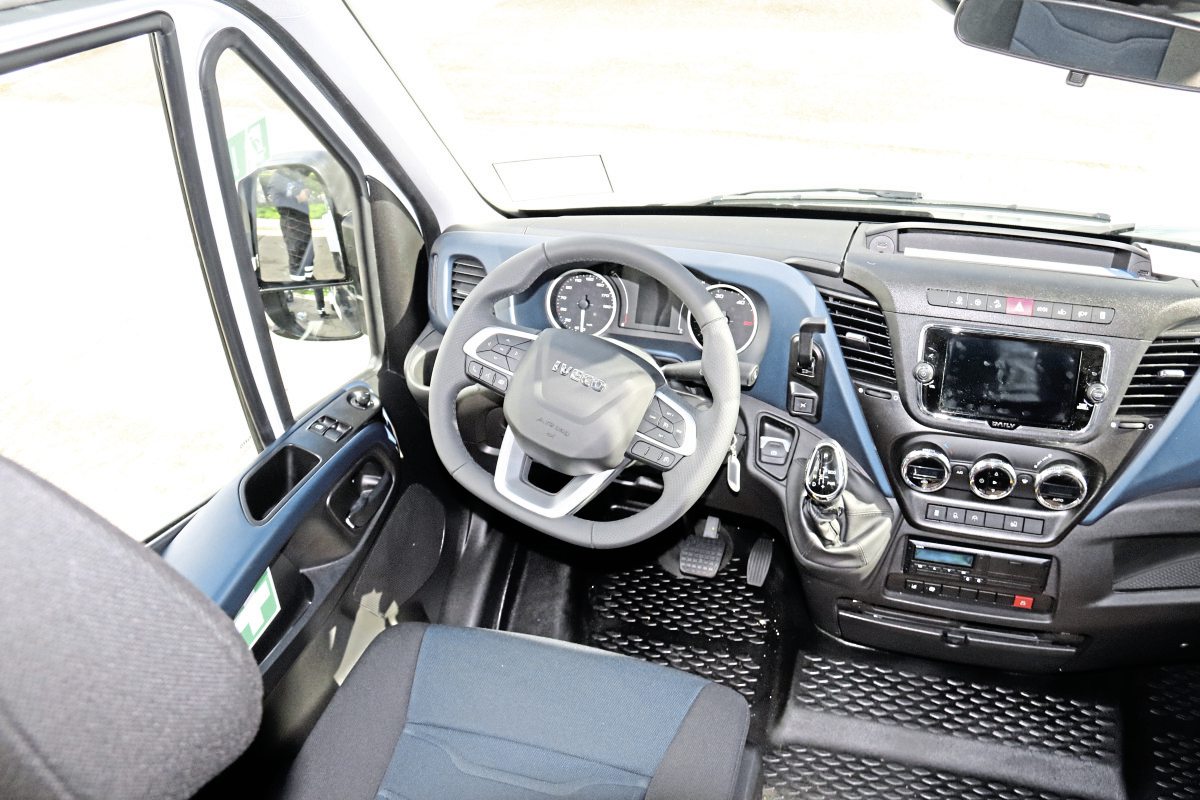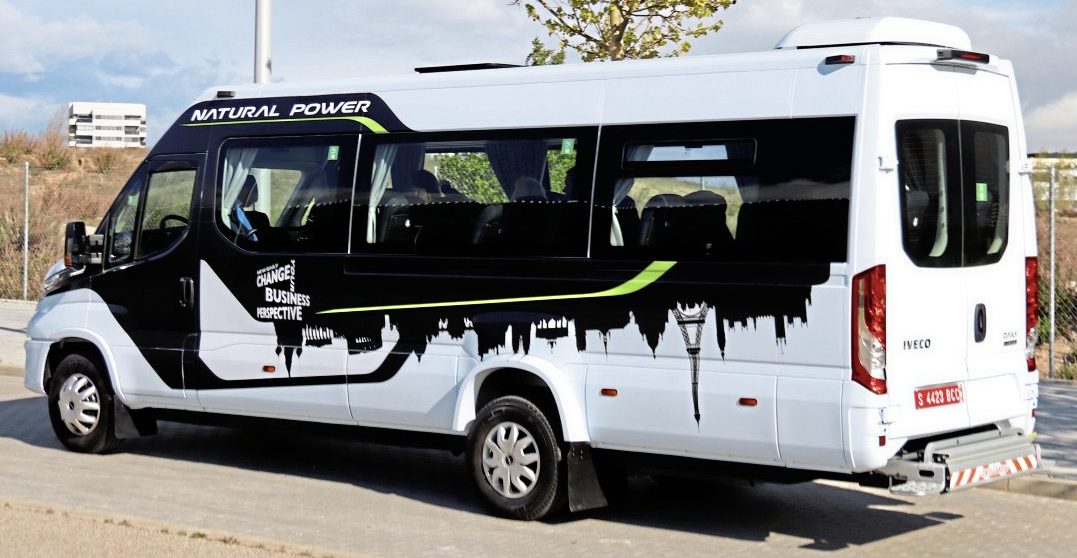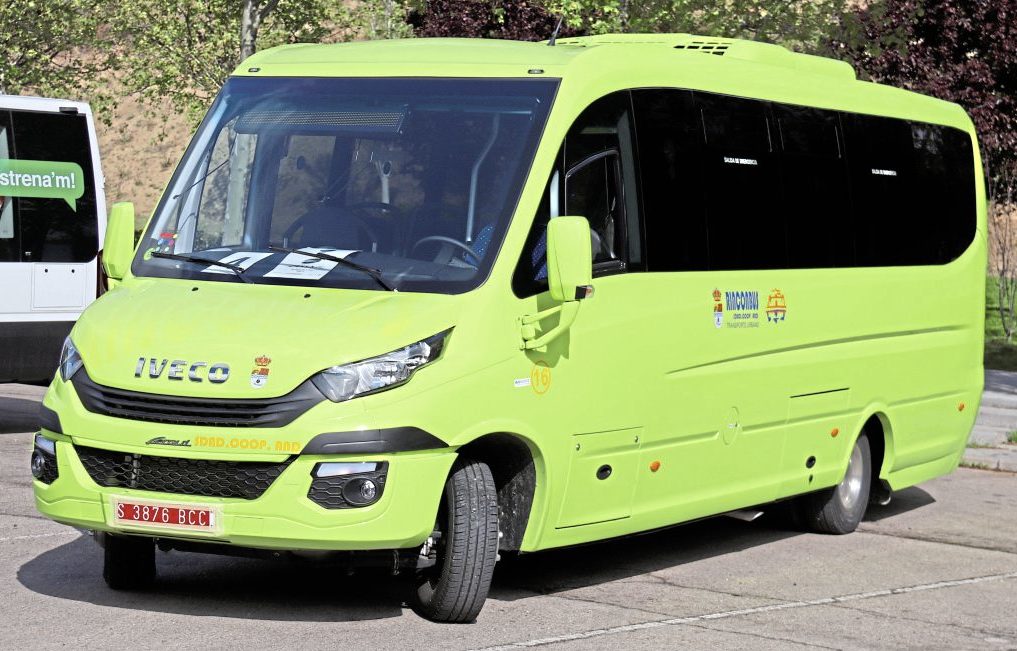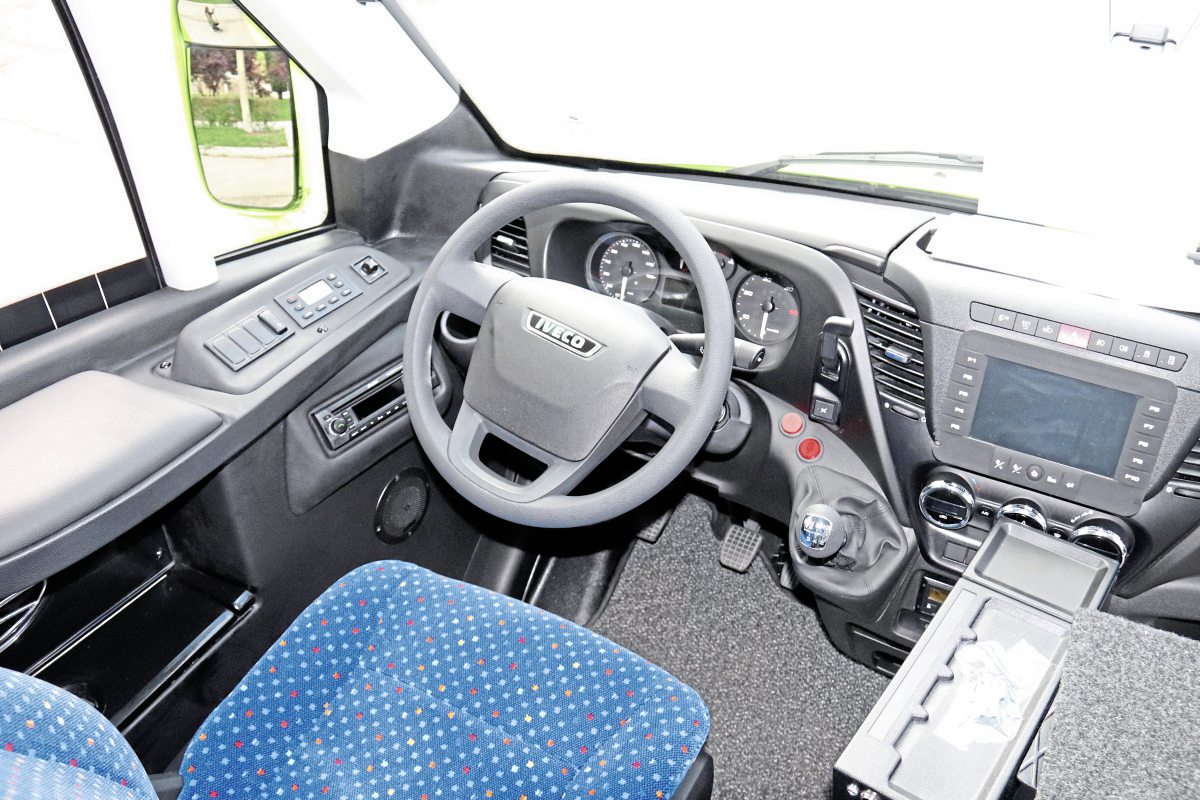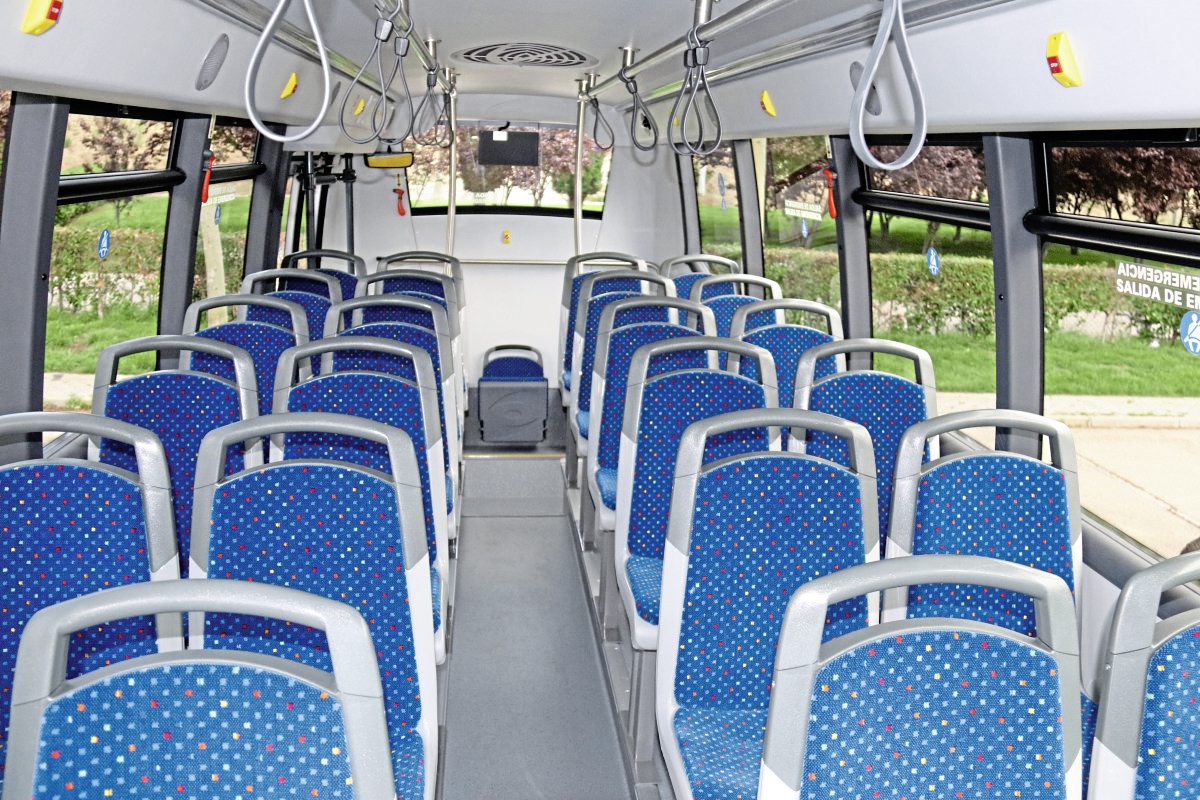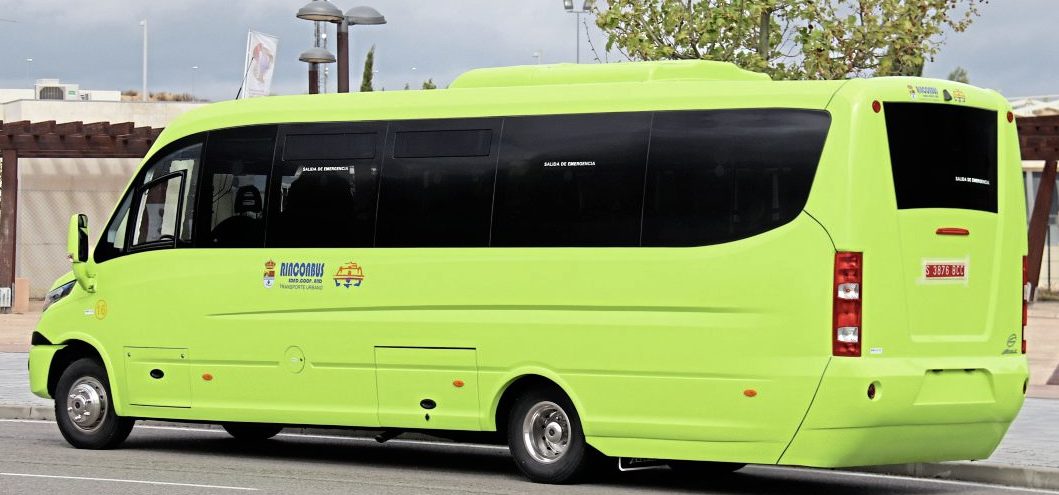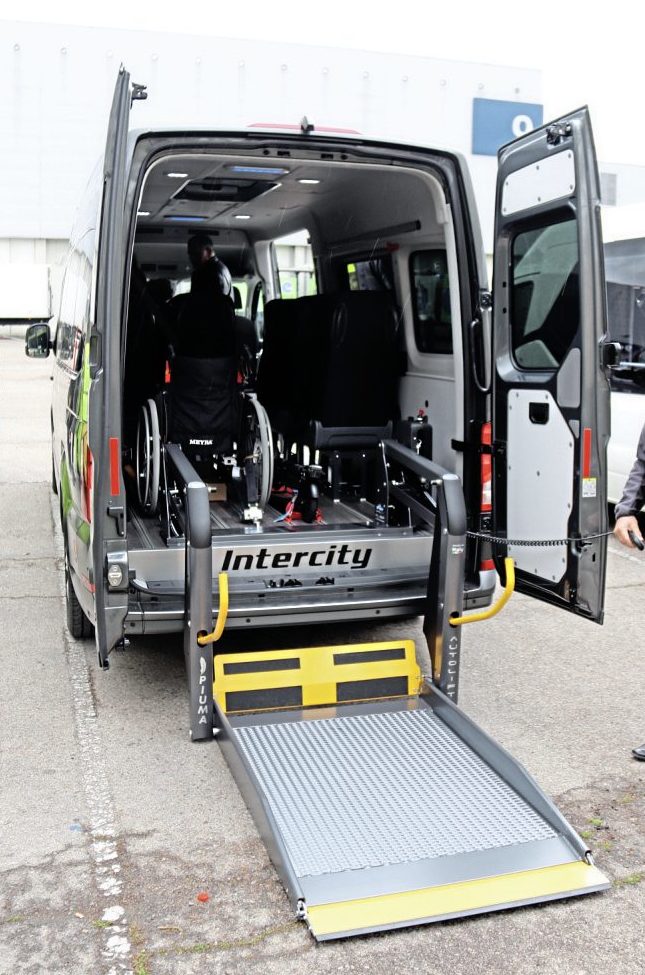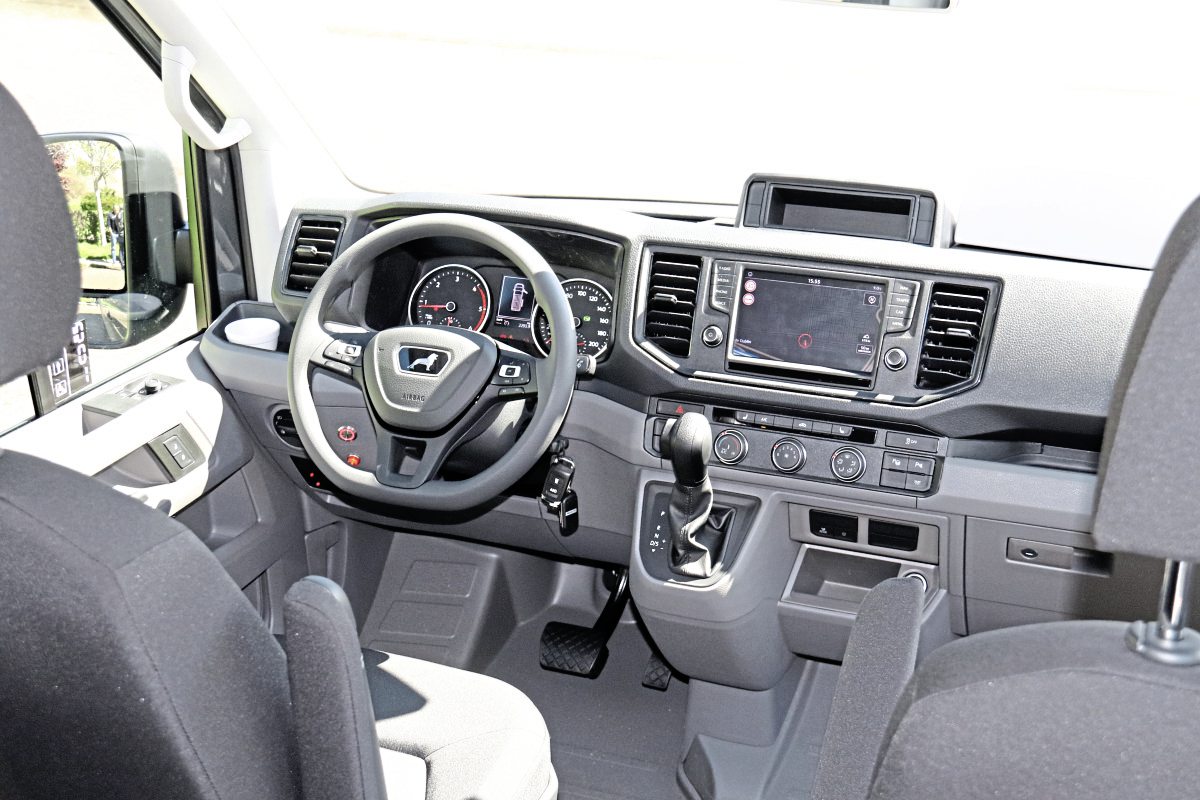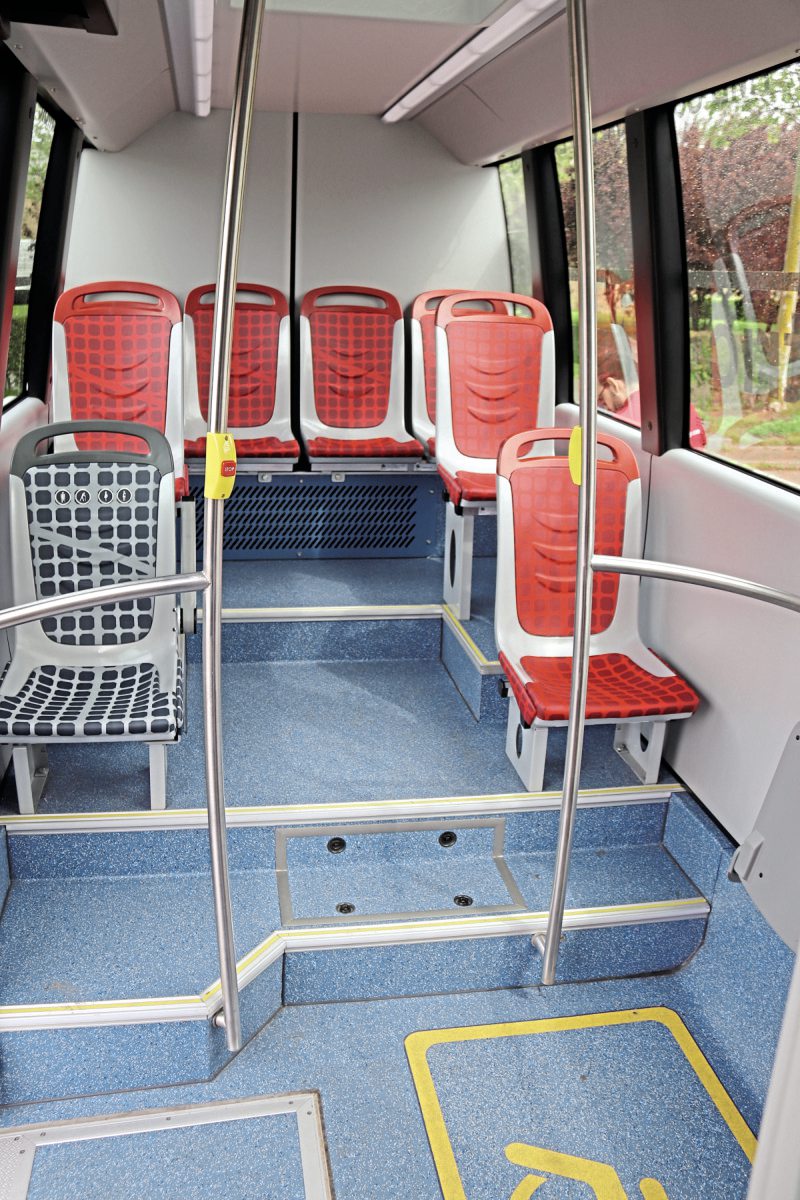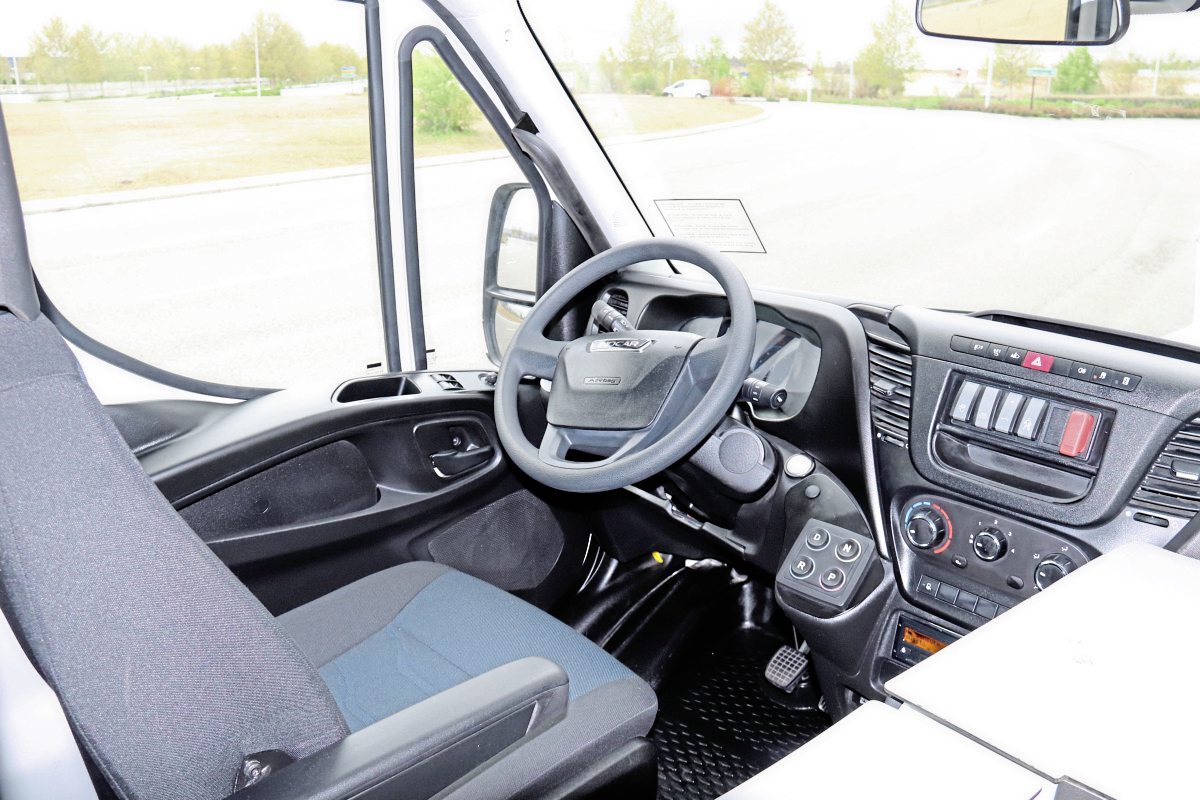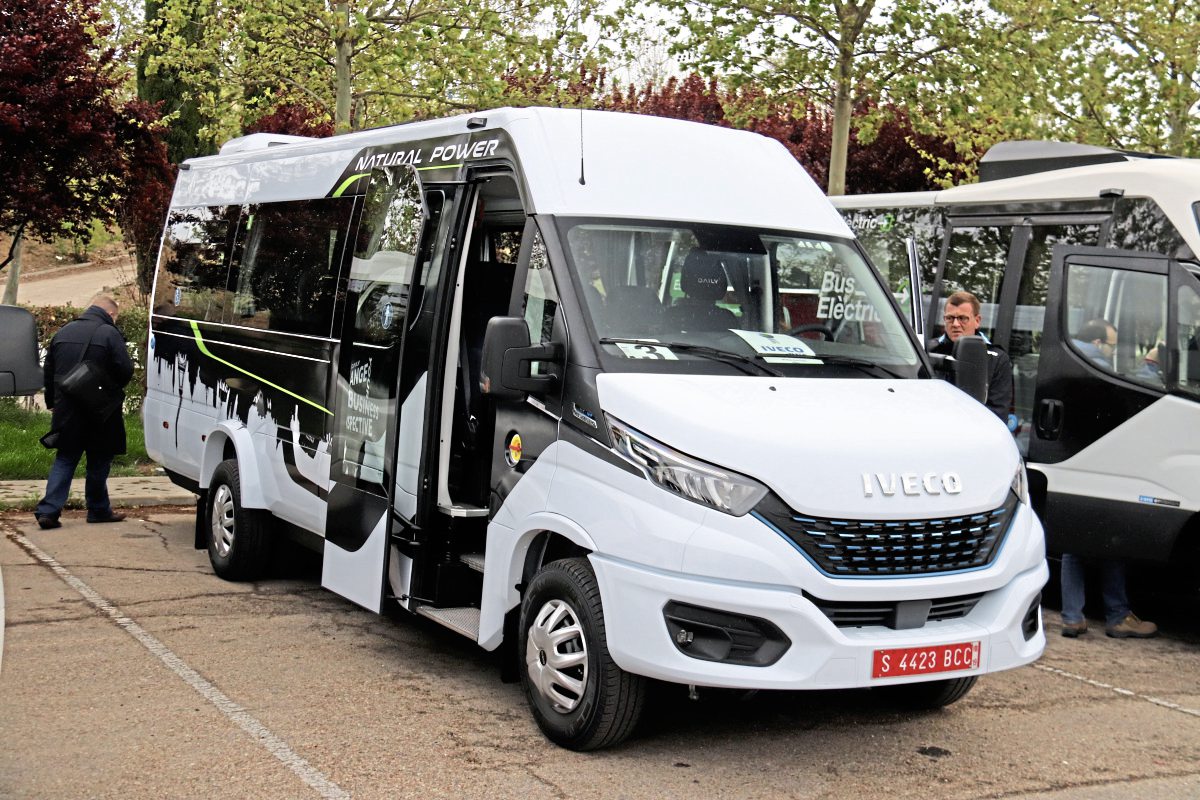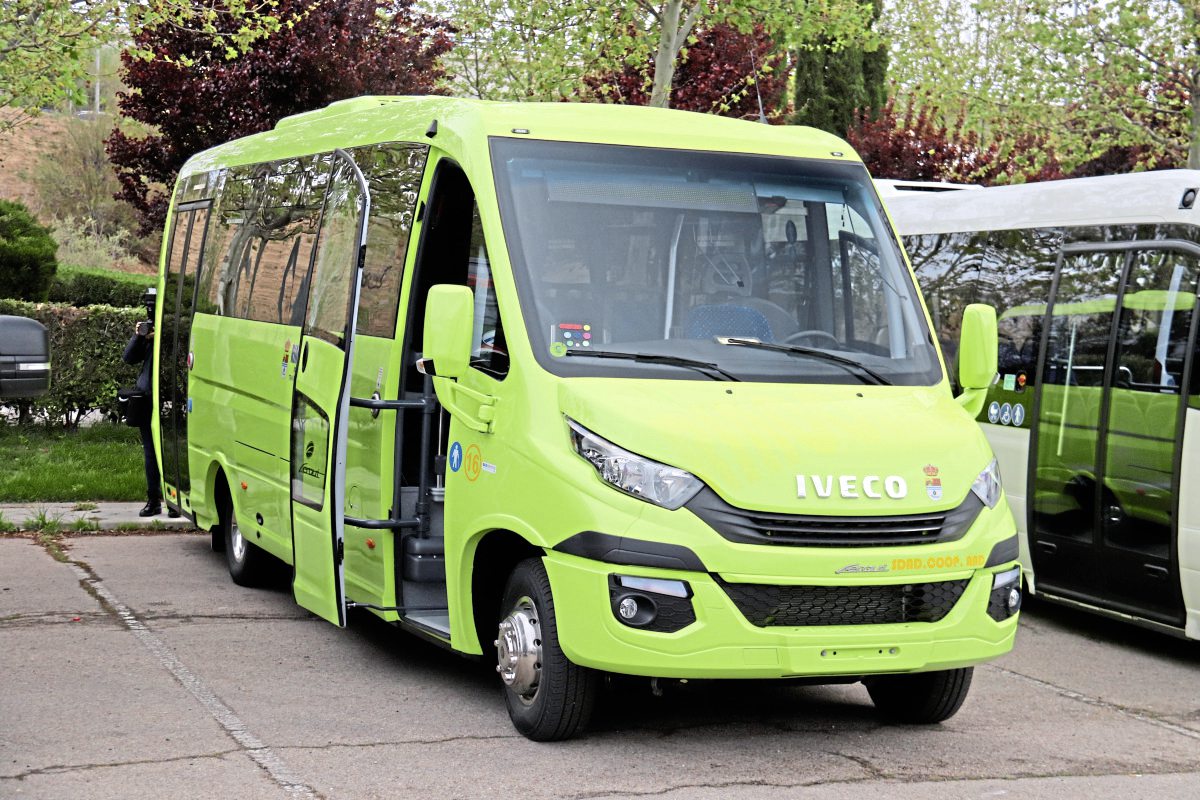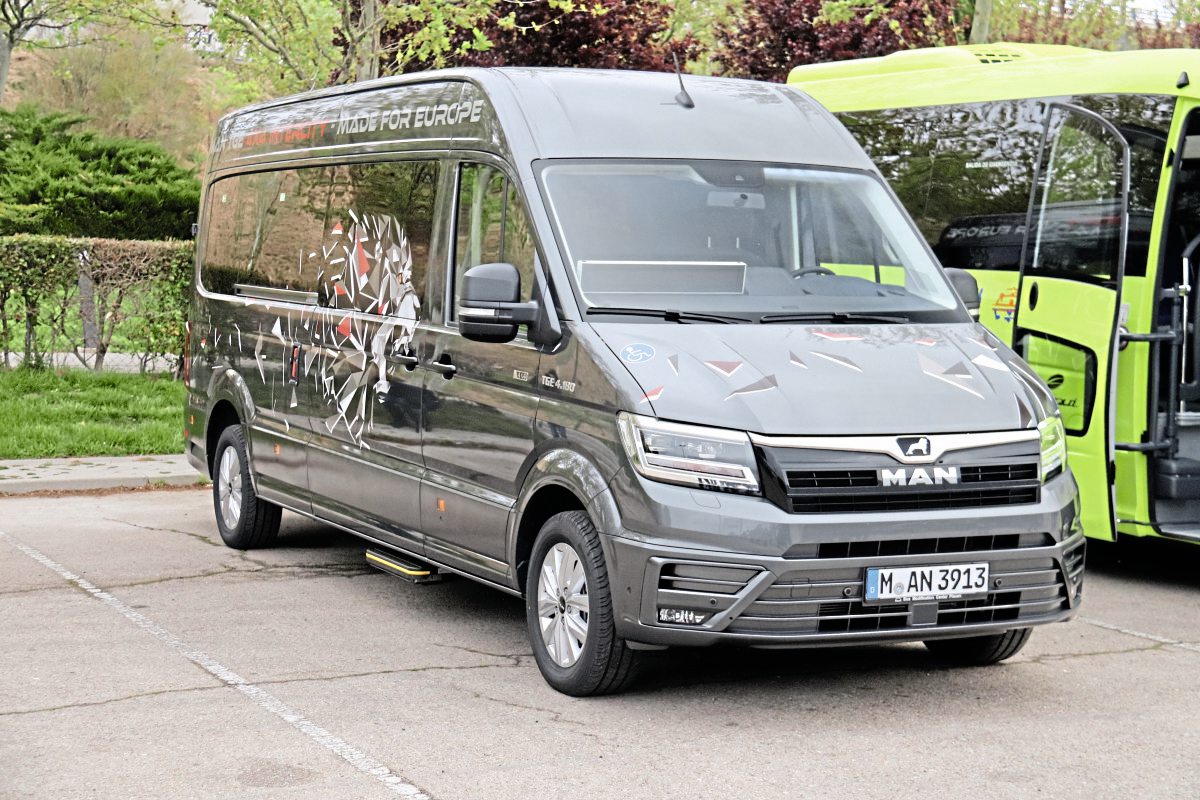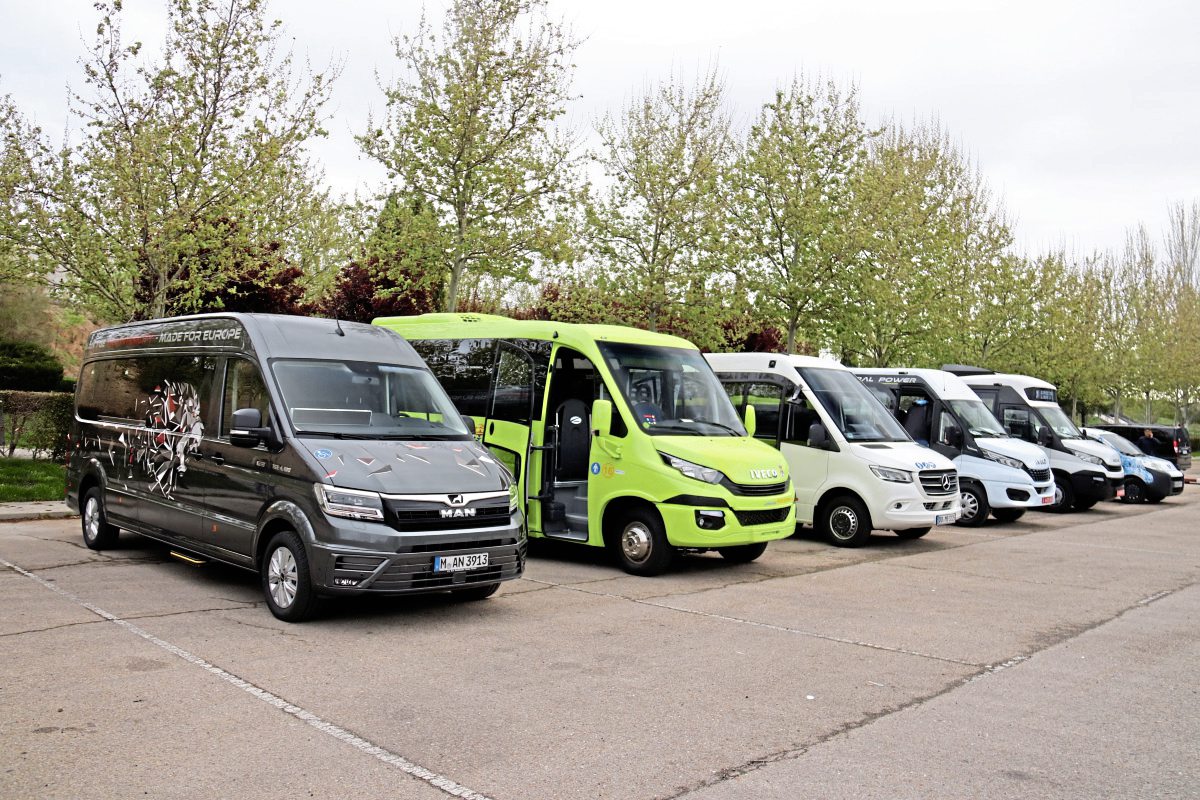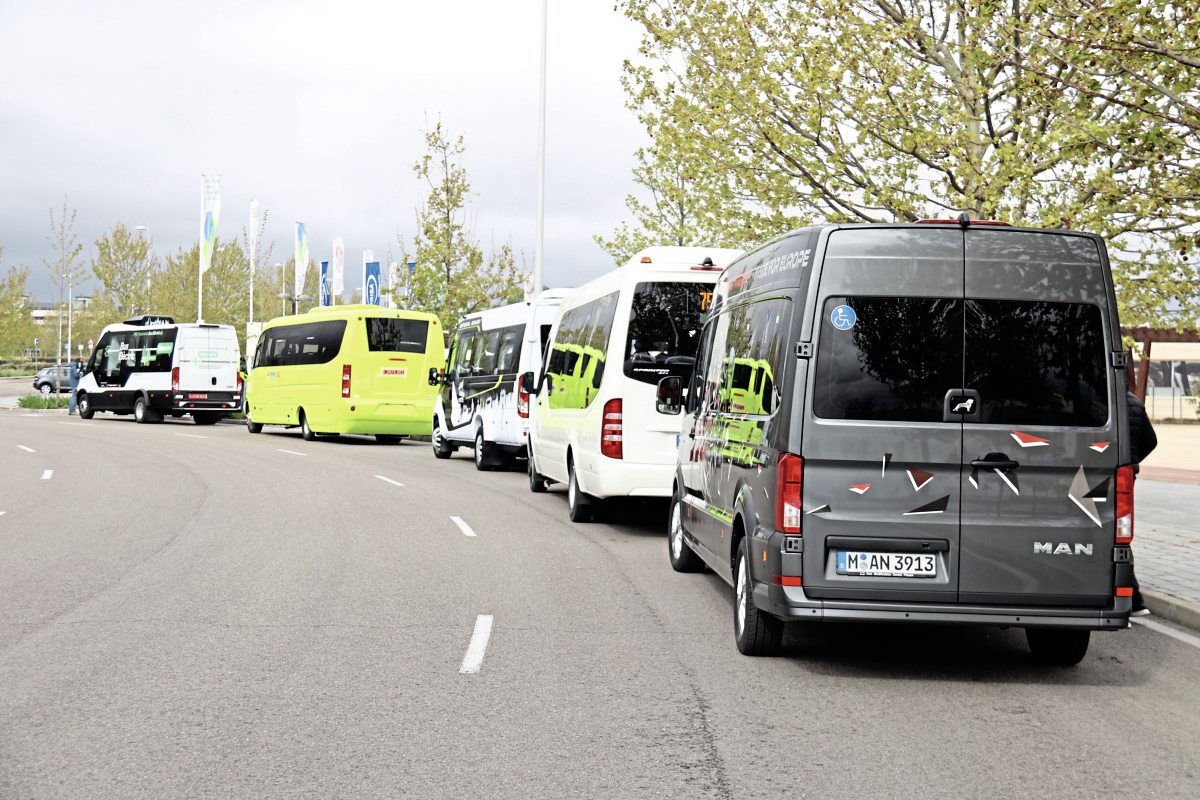Minibus Euro Test 2019
Choosing the Minibus of the Year
Small bus manufacturers from across Europe were in Madrid recently answering the invitation to put forward their latest vehicles as candidates for the Minibus of the Year accolade. First they had to participate in the second-ever Minibus Euro Test. Stuart Jones was there.
The international Bus & Coach of the Year Jury, which has been selecting the winners of the Bus & Coach of the Year accolade since its inception in 1990, two years ago added a third award to its portfolio, that of the Minibus of the Year. The format is similar to that for the larger vehicles with a test event staged to evaluate the candidates after which the results are analysed, the jurors vote and a winner is declared.
Unlike the other two trophies, the Minibus of the Year is jointly organised and sponsored by IFEMA, the organisers of the FIAA (International Bus and Coach Fair) in Madrid with the assistance of Miguel Saez and the team from the Spanish magazine, Autobuses et Autocares, under the auspices of the international Bus & Coach of the Year Jury. It is staged in Madrid in the shadow of the halls where the show takes place. This was the second such test following a successful first event in 2017 won by the Iveco Daily Tourys. Unfortunately I missed that event as a result of family illness, so this was a new experience for me.
European manufacturers were invited to enter their products and the event attracted five very different challengers. Three were vehicles entered by the leading European small bus manufacturers and two were from Spanish indigenous constructors. They were the Iveco New Daily Line Natural Power (CNG), the Mercedes-Benz Sprinter City 75, the MAN TGE 4.180 Inter-City 4×4, Indcar Strada E-City low entry and the Ferqui Sunrise SemiUrban on the Iveco Daily 70C18.
In order to decide which of the candidates should be awarded the prize – there are no second and third prizes – the Jury hears presentations from all of the manufacturers involved, takes the vehicles on the road to experience their performance and then holds a review session at which the merits and shortfalls of every minibus is discussed before the vote is held. A test route was used in the vicinity of the exhibition halls that saw the vehicles regularly passing Real Madrid’s di Stefano training stadium.
TEST WINNER – Mercedes-Benz Sprinter City 75
Launched last year and exhibited at the IAA exhibition in Hanover as well as in Birmingham, the Sprinter City 75 is the new top city model for Daimler Bus’s specialist Dortmund Minibus Centre, which produces around 1,400 Sprinter based minibuses every year. It is currently running a little below that number as it changes over to the new Sprinter but expects to produce around 280 of the City 45 and City 75 models in 2020. The City 75 takes the place in the range of former City 77, a tri-axle design that was only ever offered in left hand drive, and (I am told by European journalists) had a reputation for tyre scrub. Like the City 77, the City 75 was developed to give the company a minibus with a higher GVW capability than otherwise possible with two axle Sprinters. Slightly shorter than the 77’s 8.7m at 8.5m, the City 75 offers a maximum GVW of 6.8 tonnes, thanks to Dortmund’s development of a new rear axle rated at 5.0 tonnes and a standard 2.1 tonnes front axle mounted on GRP springs. The unladen weight of the test bus was 4,415kg.
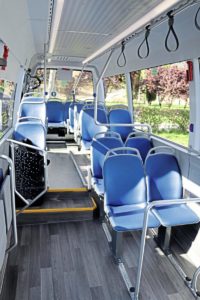 From the front, the City 75 is clearly a Sprinter, albeit with a much deeper screen, but while the body follows established Sprinter styling cues, it is clearly bigger than the standard, offering large sculpted windows. Capacity, as demonstrated, was either 16 (including four tip ups)+19+0 or 16+15+1, although a maximum of 38 is quoted. The layout has a large two-leaf front door (behind the front axle) leading to a low floor section with manual ramp built in, as well as a single rear door and steps at the rear. The low entry front entry height of only 270mm means that there is no need to have the complication of a kneeling system with compressor.
From the front, the City 75 is clearly a Sprinter, albeit with a much deeper screen, but while the body follows established Sprinter styling cues, it is clearly bigger than the standard, offering large sculpted windows. Capacity, as demonstrated, was either 16 (including four tip ups)+19+0 or 16+15+1, although a maximum of 38 is quoted. The layout has a large two-leaf front door (behind the front axle) leading to a low floor section with manual ramp built in, as well as a single rear door and steps at the rear. The low entry front entry height of only 270mm means that there is no need to have the complication of a kneeling system with compressor.
Power comes from the four-cylinder 2.143-litre OM651 DE22LA Euro VI engine delivering 161hp/120kW at 3,800rpm and peak torque of 360Nm at 1,400-2,400rpm and the gearbox is the 7G-Tronic Plus seven-speed full automatic. A Telma retarder is fitted, operated only by the foot control, as well as electromechanical power steering.
On the road the commendably soft rear suspension system was easily the most comfortable of the test group, especially over the many speed bumps encountered. It is quiet in most situations, though slightly noisier uphill. The cab is largely familiar Sprinter but the driver’s seat does not swivel and the dash panel containing the buttons is not really Mercedes-Benz quality. In the low floor area, the floor slopes slightly towards the door and there is tracking on the offside. Wood effect flooring is used, there are two steps up to the main saloon and also shallow podests. The low floor area handrails are quite high for shorter people to reach but overall the quality and the feel is good.
On the road the commendably soft rear suspension system was easily the most comfortable on test
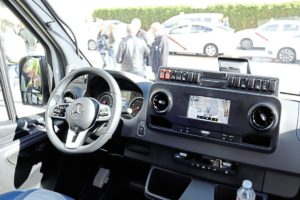 I understand that no decision has yet been made about whether the City 75 will come to the UK in right hand drive. If it does come here it will not have the second entry door at the rear, the main door will be at the front and there will be an emergency door. I am told that this would probably allow 21 fixed seats. I can imagine that one reason for decision not yet having been made is the cost. The basic City 75 costs from €142,500 but the specification of the test bus brought it up to over €165,000.
I understand that no decision has yet been made about whether the City 75 will come to the UK in right hand drive. If it does come here it will not have the second entry door at the rear, the main door will be at the front and there will be an emergency door. I am told that this would probably allow 21 fixed seats. I can imagine that one reason for decision not yet having been made is the cost. The basic City 75 costs from €142,500 but the specification of the test bus brought it up to over €165,000.
Whether or not the City 75 does appear on our market, operators will still be able to purchase the shorter City 45 in new generation format, the original version certified for up to 28 passengers having been available here for some years. The precise specification of the new City 45 has yet to be defined.
To date, around 30 City 75s have been sold in Europe, the first two to the German operator, Stoeckler of Gopingen, in December of last year.
THE CANDIDATES – Iveco Daily Line Natural Power
It was only this month that Iveco launched the new Daily, the details of which appeared in B&CB issue 1526 (19 April 2019) and the minibus entered in the Minibus Euro Test was to the new specification, indeed it was the same one that I had travelled on during the launch. Iveco is heavily committed to natural gas and it was powered by the three-litre F1C Euro VId natural gas engine that Iveco promote under the Natural Power name. It pointed to the 35% reduction in NOx, 95% reduction in particulate matter (PM) and 3DB drop in noise compared with diesel, as well as an 80% fall in CO2 emissions if biomethane is used as the fuel. The four-cylinder unit produces maximum torque of 350m at 1500-2730rpm and maximum power of 136hp/100kW at 3,500rpm.
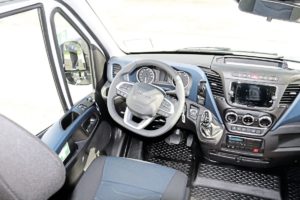 Aside from the new engine upgrade, the major visual difference with the new Daily is the frontal styling with the larger bumper which is in three separately supplied sections in order to reduce repair costs. The cab includes a number of upgrades and there are telemetry and driver aid improvements too.
Aside from the new engine upgrade, the major visual difference with the new Daily is the frontal styling with the larger bumper which is in three separately supplied sections in order to reduce repair costs. The cab includes a number of upgrades and there are telemetry and driver aid improvements too.
The Daily Line is an interurban rather than a city minibus with only the one narrow door and relatively steep steps but it offers good legroom. There are 22 cloth-trimmed passenger seats arranged in a 1+2 layout with four at the rear, the final two rows being tracking mounted and quickly demountable in favour of wheelchairs. The single seats are on the continental nearside, with overhead luggage racks on both sides, a glazed roof light, curtains, wood-effect flooring and a rear mounted Dhollandia underfloor lift. Iveco had previously said it was planning to introduce a larger windscreen, but this welcome upgrade has yet to appear.An efficient retarder, operable on both the brake pedal and on a dash mounted lever is standard on the gas variant and an option on diesels, though it could do with being more within reach of the steering wheel without having to take your hand off the wheel. A feature of the new Daily is a smaller steering wheel that isn’t round, it has a flattened lower section to give more legroom, and drivers I spoke to seemed to like it. They also reported that the 136hp output of the gas engine was on the low side, especially on hills, though some said it was just a case of getting used to working the unit harder than a diesel. An unfortunate side effect of this approach was increased noise. The opportunity to purchase a CNG fuelled bus with an automatic box is possibly now an option that only Iveco offers, Mercedes-Benz confirming that it is not currently an option on the Sprinter.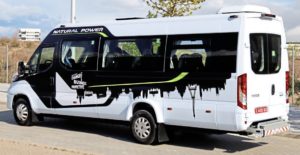
Two other new options on the Daily were an electric hand brake interlinked with the door mechanism and a ‘City’ steering mode option activated by a button on the dash that makes the steering lighter up to 30km/h to help with manoeuvring. The steering innovation worked well but several drivers questioned whether it was necessary.
In comparative value for money terms, given the capacity, this is an interesting proposition. We were given a price of €80,000 for the bus entered, including the lift, close to €20,000 more than the equivalent diesel but nothing like the cost of an electric. The price will be the same in the UK because Iveco has a Europe wide pricing policy, although whether this continues after Brexit we will have to see.
Ferqui Sunrise SemiUrban Iveco Daily
Based at Asturias in Spain, but also with manufacturing facilities in Turkey, Ferqui is a specialist in small- and medium-sized minibuses. After a long relationship with Optare, it is now represented in the UK by Steve Peach of Thorne based Connaught PSV, selling 16/19/22 seat Sprinter-based models and larger coaches on the Iveco Daily 70C18. Although the versatile S3 frame is sold in the UK as a coach, the vehicle entered was not to a specification that you would expect to see on our streets. Based on the current rather than the new 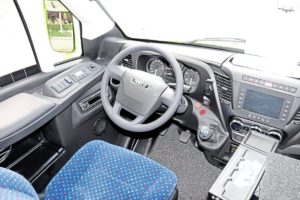 generation Iveco Daily chassis cowl, it featured the Sunrise Semi Urban coachbuilt body which has a three-step (from the floor) entrance at the front leading to a raised central seating area. A second two-leaf doorway at the rear with manual fold-out ramp gives access to a low floor platform with two steps up the main passenger area. Wider than the other vehicles entered at 2.48m, the Ferqui has six double seats on each side of the gangway, a fixed total of 24. All seats are mounted on podests and there are plenty of straphangers for standing passengers to hold on to. Various other layouts are possible including single seats along each side and a larger central standing area.
generation Iveco Daily chassis cowl, it featured the Sunrise Semi Urban coachbuilt body which has a three-step (from the floor) entrance at the front leading to a raised central seating area. A second two-leaf doorway at the rear with manual fold-out ramp gives access to a low floor platform with two steps up the main passenger area. Wider than the other vehicles entered at 2.48m, the Ferqui has six double seats on each side of the gangway, a fixed total of 24. All seats are mounted on podests and there are plenty of straphangers for standing passengers to hold on to. Various other layouts are possible including single seats along each side and a larger central standing area.
The rear low floor area is a poor, if cheap, solution to providing accessibility that is unpleasant to travel in
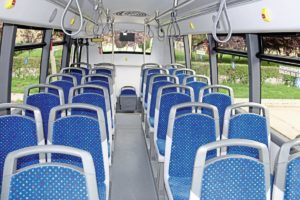 I am going to be totally honest about the rear low floor area; I think it is a poor, if cheap, solution to providing accessibility that is unpleasant to travel in and not without inherent safety risks. Notable among them is that it is difficult for the driver to see what is happening there. The area has three tip-up seats along the rear of the body and a single wheelchair bay on the offside, with the ramp extending much of the way across the floor. If you are in the wheelchair bay, which does not have the ironing board type restraint we are accustomed to in the UK, there is no offside window and you have to rely on looking out of the fully glazed rear door to know where you are. You are also in the part of the bus that has the worst ride characteristics, the suspension being particularly jarring on the speed bumps that were not infrequently encountered on the test route. Underlining its unsuitability for the UK was the fitting of a manual gearbox when the HiMatic automatic only adds around €2,000 to the price.
I am going to be totally honest about the rear low floor area; I think it is a poor, if cheap, solution to providing accessibility that is unpleasant to travel in and not without inherent safety risks. Notable among them is that it is difficult for the driver to see what is happening there. The area has three tip-up seats along the rear of the body and a single wheelchair bay on the offside, with the ramp extending much of the way across the floor. If you are in the wheelchair bay, which does not have the ironing board type restraint we are accustomed to in the UK, there is no offside window and you have to rely on looking out of the fully glazed rear door to know where you are. You are also in the part of the bus that has the worst ride characteristics, the suspension being particularly jarring on the speed bumps that were not infrequently encountered on the test route. Underlining its unsuitability for the UK was the fitting of a manual gearbox when the HiMatic automatic only adds around €2,000 to the price.
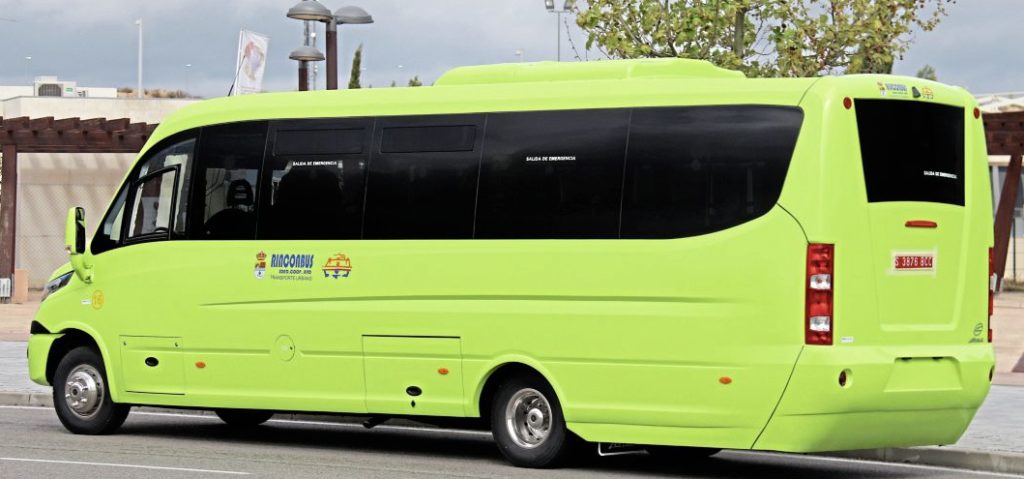 Despite the drawbacks of the concept, the finish was good, some of those driving considered the mirrors better than those on the Iveco Daily, and it was relatively spacious. There were some concerns about the extent to which the length of the rear overhang resulted in swing-out when cornering but, with a price tag of €120,000, it represents a relatively low cost means of providing accessibility and seating capacity in an easy to maintain package.
Despite the drawbacks of the concept, the finish was good, some of those driving considered the mirrors better than those on the Iveco Daily, and it was relatively spacious. There were some concerns about the extent to which the length of the rear overhang resulted in swing-out when cornering but, with a price tag of €120,000, it represents a relatively low cost means of providing accessibility and seating capacity in an easy to maintain package.
MAN TGE 4.180 Inter City 4×4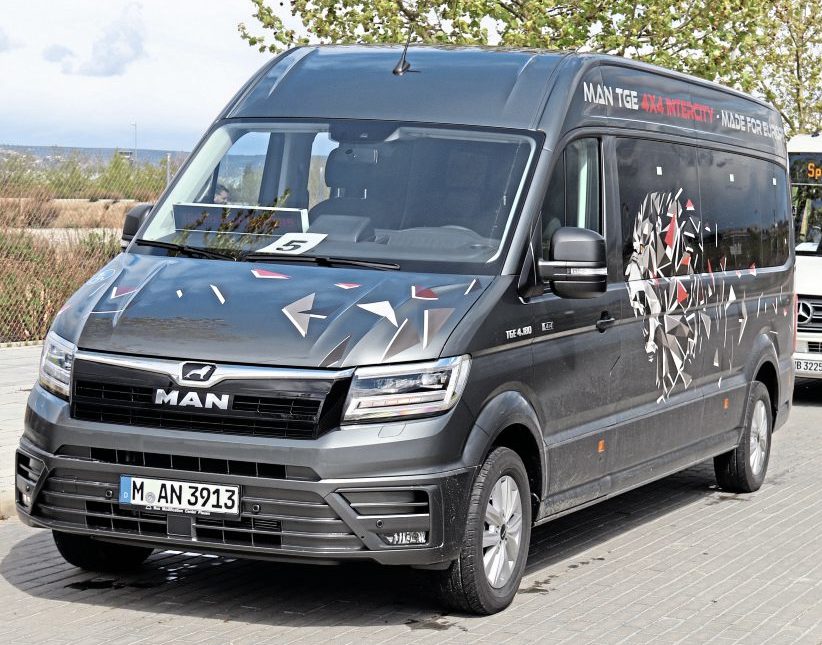
In the past, buying a minibus with a four-wheel drive capability required a lot of expense and some compromise in the overall attractiveness of the package, often involving a raised ride height and consequent increase in step heights. With the Volkswagen Crafter derived MAN TGE 4.180 InterCity 4×4 operators can gain the 4×4 element at an on-cost of only around €3,000 without the previous compromises. The 4×4 capability is achieved using the fifth generation Haldex system of electronically controlled multi-plate clutch on the rear axle. It reacts in 84 milliseconds and, because the feature only operates when it is needed (on demand), it should not negatively impact on fuel economy. I am not pretending that 4×4 is something that every operator needs, far from it, but there may be those in hilly terrain or in areas where winter snowfall is above the average who consider the extra investment is justified. Certainly my Swiss colleague could see a role for it.
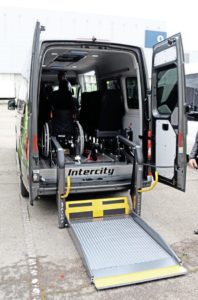 UK operators are only just coming to terms with the TGE; the first minibus that MAN has offered. MAN has completely renewed its bus and coach offering in recent years and this additional option is the final part of that process. The first conversions have now been completed and many will have seen the Minibus Options converted example at the recent UK Coach Rally in Blackpool. TGE offers a family of minibus alternatives from 3.5 to 6.0 tonnes. The vehicle entered in Madrid was a 4.0 tonne 4.180. It featured an Autolift lift at the rear which MAN chose because, although it isn’t the cheapest available, they believe it of good quality and is the quietest in operation – it didn’t rattle.
UK operators are only just coming to terms with the TGE; the first minibus that MAN has offered. MAN has completely renewed its bus and coach offering in recent years and this additional option is the final part of that process. The first conversions have now been completed and many will have seen the Minibus Options converted example at the recent UK Coach Rally in Blackpool. TGE offers a family of minibus alternatives from 3.5 to 6.0 tonnes. The vehicle entered in Madrid was a 4.0 tonne 4.180. It featured an Autolift lift at the rear which MAN chose because, although it isn’t the cheapest available, they believe it of good quality and is the quietest in operation – it didn’t rattle.
6.836m long and 2.04m wide, the TGE InterCity with Mobility Pack is a conversion of a van built at Wrzesnia, Poland, carried out at the Bus Modification Centre (BMC) in Plauen where the Neoplan Starliner was previously built. The skilled workforce there handles all of MAN/Neoplan conversion work and as well as minibuses completes football coach conversions for leading teams including the German national football team. Within a flexible layout featuring saloon tracking, the TGE can carry between five and 12 seated passengers and/or between one and three wheelchairs. I question the choice of the high roof rather than the extra high roof van because the dark interior colours, coupled with the solid decals, rather than contra-vision decals, covering some of the windows, 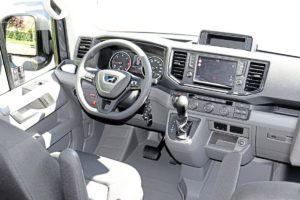 gave it a slightly claustrophobic feel, emphasised by the retention of the van storage areas over the cab area.
gave it a slightly claustrophobic feel, emphasised by the retention of the van storage areas over the cab area.
The driveline consisted of a Euro 6 2.0 litre diesel unit rated at 177hp/130kW at 3,600rpm giving torque of 410Nm at 1,500-2,000rpm coupled to and eight-speed automatic transmission with slip-controlled converter lock-up clutch manufactured by Aisin AW of Japan.
We were told that the price of the minibus inspected was €69,500, of which €4,500 was for the lift and €3,000 was for the 4×4 feature, both of which are optional. With the TGE Kombi and InterCity already available, a new TGE City is set to be launched at Busworld in Brussels later this year.
Indcar Strada E-City low entry 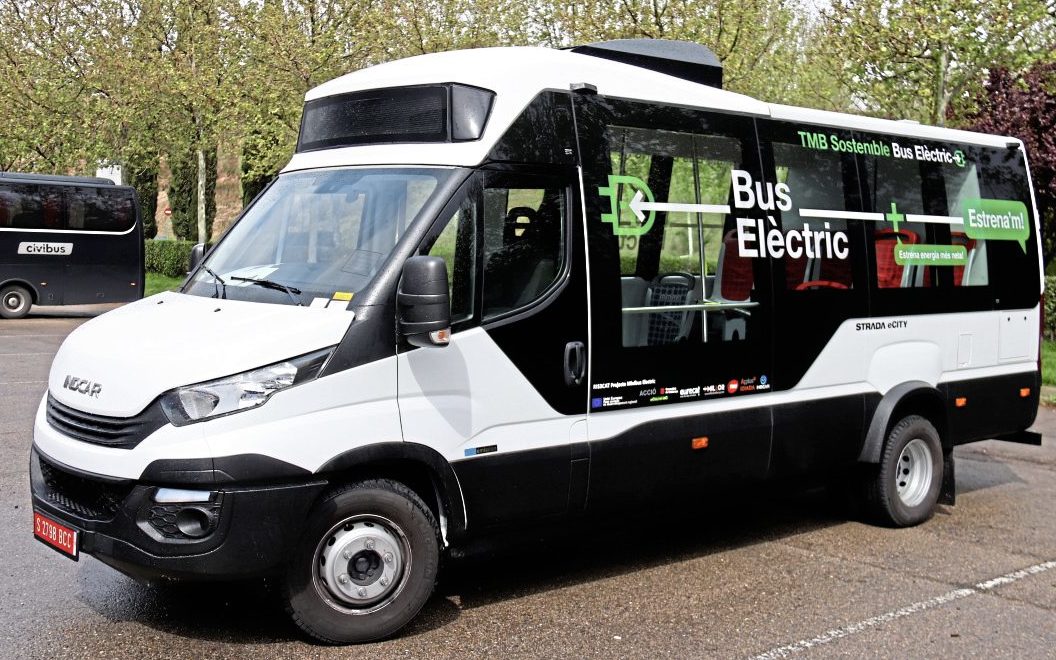
Indcar is a well-respected brand, not only in Spain but across Europe with a long history of supplying product to the UK.
Probably unlikely to appeal to UK customers on account of both concept and price, the minibus presented was a Strada E-City low entry electric city bus mounted on a 7.12m Iveco Daily van base. Indcar is one of five partners within the EU and Spanish local authority backed ‘Mobilitat Eco’ project, which aims to make Catalonia a leader in the manufacture of electric minibuses. The other partners are Eurekat, IDIADA, Millor Battery and the Barcelona municipal fleet, TMB, which will operate the minibus and is expected to take 20 in 2020 and a further ten in 2021. The aim is to produce a zero-emission bus that can operate for 16 hours every day, with a range of 200km, enabling it to cover two shifts. This has been proved at IDIADA’s testing facilities along with the ability to ascend a 24-degree slope and an energy usage of 0.65kWh per km.
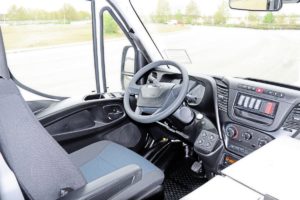 This was a prototype; production will not start until the end of the year, and elements of the finish reflected this. The layout retains the chassis front and rear and some of the lower structure of the original van, including the full height rear double doors, but behind them is not the interior but a bank of batteries stacked one above the other. This bus has four, but three- and five-module packs can also be accommodated. Running at 360 Volts, the liquid-cooled NMC batteries were developed by Millor Battery in Barcelona, are relatively light weight, give an output of 135kWh (five batteries), can undertake 4,000 recharging cycles in their first life and have a second life thereafter. Using a 20kWh charger they can be replenished in five to six hours. Mounted at the front, the 120kW (nominal) electric motor is from Magtech and the inverter is from Brusa. After stepping down, a standard diesel rear axle is driven via a prop shaft. Webasto air conditioning is also fitted.
This was a prototype; production will not start until the end of the year, and elements of the finish reflected this. The layout retains the chassis front and rear and some of the lower structure of the original van, including the full height rear double doors, but behind them is not the interior but a bank of batteries stacked one above the other. This bus has four, but three- and five-module packs can also be accommodated. Running at 360 Volts, the liquid-cooled NMC batteries were developed by Millor Battery in Barcelona, are relatively light weight, give an output of 135kWh (five batteries), can undertake 4,000 recharging cycles in their first life and have a second life thereafter. Using a 20kWh charger they can be replenished in five to six hours. Mounted at the front, the 120kW (nominal) electric motor is from Magtech and the inverter is from Brusa. After stepping down, a standard diesel rear axle is driven via a prop shaft. Webasto air conditioning is also fitted.
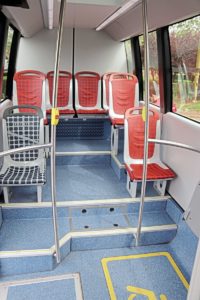 With a maximum GVW of 7.2 tonnes and a ULW of 5.1 tonnes, the bus is certified to carry 22 passengers, although there are only eight fixed seats and two tip ups. The passenger area to the rear of the driver has a low floor area with a wheelchair bay, Masats electric ramp and double doors and beyond this there are up to three steps up to the seats, arranged as four singles and a row of four along the rear. The interior was bright and the door aperture was wide.
With a maximum GVW of 7.2 tonnes and a ULW of 5.1 tonnes, the bus is certified to carry 22 passengers, although there are only eight fixed seats and two tip ups. The passenger area to the rear of the driver has a low floor area with a wheelchair bay, Masats electric ramp and double doors and beyond this there are up to three steps up to the seats, arranged as four singles and a row of four along the rear. The interior was bright and the door aperture was wide.
On the road the standard Iveco suspension, which is air at the rear, seemed extremely hard, even with 12 people on board, and the single-glazed windows steamed up. The steering was heavy and the top speed achievable was 56kph downhill. Strong recuperation as soon as you took your foot off the accelerator made it difficult to drive smoothly and it was difficult to see what range was left when you were driving.
A big issue is the price of the bus which starts at €280,000 for a bus with three battery packs and would exceed €300,000 with four or five packs. I doubt that this would be acceptable to UK purchasers in the current economic climate for a bus carrying relatively few passengers, but as buyers are more likely to be politicians than operators, I may be wrong.
